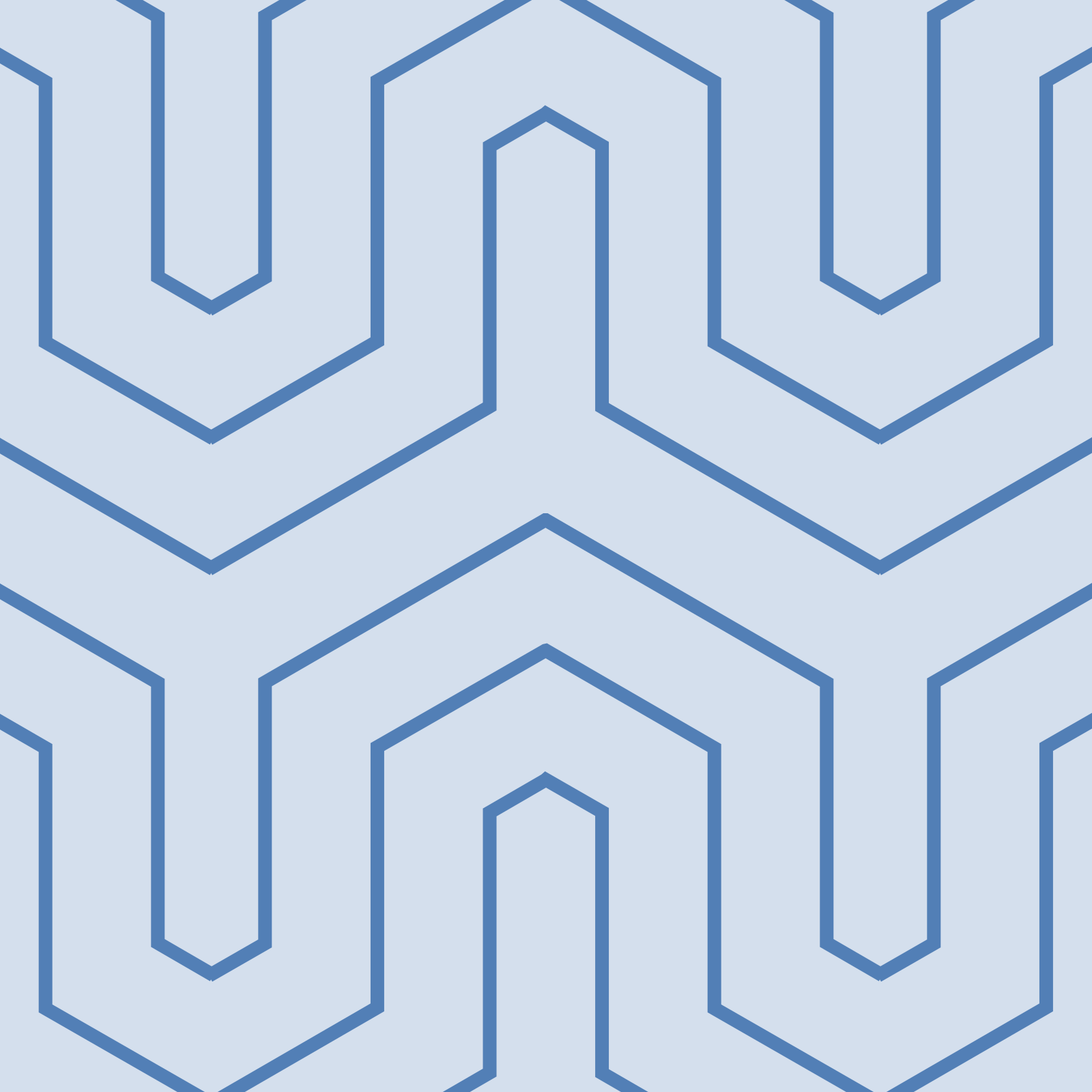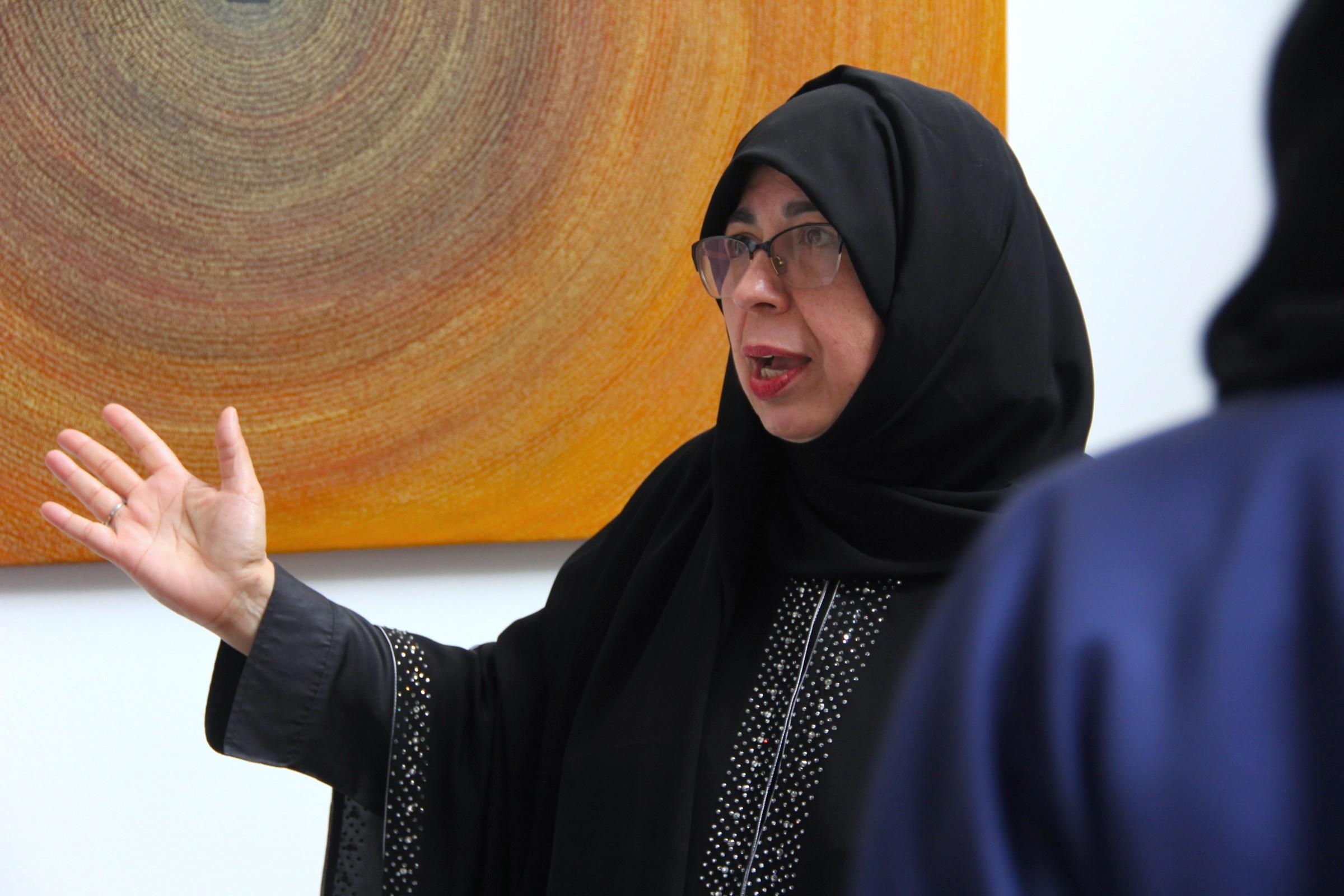The art of selling art: Islamic artists need to be more business savvy, say practitioners
Photo: British artist Siddiqa Juma showing her work at her exhibition 'Tawwaf' in October at the Alserkal Cultural Foundation in Dubai, UAE. Photo supplied by Siddiqa Juma
Islamic visual art remains relatively untapped as an investment opportunity but even before the sector can talk about bringing in the buyers, artists must become a lot more business savvy, say practitioners.
Siddiqa Juma, who specialises in contemporary Islamic art, believes artists need more support to sell their work.
“At the moment, there isn't the support mechanism, especially with regards to training us artists, about how to sell. As artists, it's really difficult to have that thinking,” the British painter told Salaam Gateway.
One of the keys to solving this problem, according to Juma, is to have an internationally-recognised body that can support artists.
“There needs to be a body; an umbrella under which all of these services is under. Like the Islamic Fashion [and Design] Council, for example,” she said.
“There isn't one for art. There needs to be a body to represent us and speak for us.”
But the work of nurturing business savvy artists should start at school when young people are still deciding on their career paths.
“We [need to] combine it with teaching them about the art of selling your art. The business side of it,” said Juma.
“If you want it to be something that people take as a career choice, they're going to have to earn [money], so I think you need to showcase, you need to have exhibitions, you need to bring the buyers in, you need to teach them about licensing.”
Annamaria Bersani, director of the Dubai-based Alserkal Cultural Foundation that hosted Juma’s recent ‘Tawwaf’ exhibition, agrees that more education is required.
“We can do much more. One of my missions is to visit universities to find new talent and make them understand that they have the talent to grow and become independent,” said Bersani.
“So, I try to organise for them a business plan ... But also from their side, sometimes they are not ready to become [full-time] artists, as it requires a lot of effort.
“It's not an easy job, so you need to have a lot of passion, and you need to have a lot of motivation.”

Photo: Works from Siddiqa Juma's 'Tawwaf' exhibition in October, 2018 at the Alserkal Cultural Foundation in Dubai, UAE. Photo supplied by Siddiqa Juma
SUPPORT
One artist in Dubai can speak to the benefits of a structured support system.
Jaber Alhaddad, an Emirati artist who specialises in Islamic geometry patterns, began exhibiting his work early this year with support from government body Dubai Culture. He then started hosting workshops to encourage more individuals to learn about the art form.
“[For many places], the main challenge I see is the lack of support from relevant governmental or semi-governmental organisations. This is something I don't feel here [in the UAE], as we get a lot of support from entities, such as Dubai Culture,” Alhaddad told Salaam Gateway.
Alhaddad has a full-time job in IT and has been practising art on the side for five years. He said that he has received enough support to consider going full-time within three years.
“Now I can see the potential of doing so, especially with the support of many government organisations, not just in Dubai, but also Abu Dhabi and Sharjah,” he said.
“In the rest of the Middle East, I am seeing a lot of interest coming from Saudi Arabia. Unfortunately, most of the hubs normally associated with Islamic art [such as Syria, Turkey and Egypt] have other problems to deal with at present, therefore not allowing them to promote it fully,” he added.
But it is not just government that needs to support Islamic art, he said. Businesses should be willing to take risks.
“Some businesses take the risk, some don't. [It's fair that the decision] is driven by business, because they need to survive,” he said. “But I believe that with enough promotion, this art can get the recognition that it deserves.”
WIDER APPEAL
The Emirati artist also hopes for more education to increase public awareness of Islamic art.
“The [majority of the] public isn't aware of this kind of art; they're not aware that these types of shapes are a form of art and have a lot of meaning behind them,” said Alhaddad.
“For example, when hosting a workshop, the number of people attending is very low. Maybe more promotion is required by organisers and from the artists as well.”
He believes more people will start to pay attention to Islamic art if it is used in different applications and seen not just in galleries but also in malls, for example.
Bersani agrees that appealing to a wider audience is crucial.
“Sometimes, artists fall into the trap of producing art that only appeals to Muslims, as opposed to having a broader audience understanding it. Maybe we need to be more international in the content,” she said.
“For example, calligraphy is something amazing - the style, the shape, so everyone gets it. Even if they don't understand the content.”
She said that previous exhibitions held at Alserkal that contained religious content received mixed reactions.
"Some people didn't know that it was okay for them, so this is part of the conversation. Art is meant to be for everyone,” she said. “Sometimes, Islamic artists like to take the classical [content] route in order to be 'safe'.”
Alhaddad agrees.
“There are three elements of Islamic art - calligraphy, floral patterns or ‘Arabesque’ and geometric patterns,” he said.
“Many people are interested in this art, but they have no idea that there's art called Islamic art. The name is misleading,” he added.
“If you take it literally, there's no such thing as Islamic art, as you cannot associate art with a religion. But it was referred to as Islamic art, because it started in the Islamic world.”
For Juma, she said she has found ways to communicate her work to viewers outside of Muslim-majority countries.
Her ‘Tawwaf’ exhibition centres around Islam’s holy Ka’bah but she found in it a more universal, human connection.
“As I continued to grow and explore further the idea of the Ka'bah, I realised one thing: that the Ka'bah in Mecca is geography and where we go. But the house of God is within all of us - it's within our heart,” she said.
“So, the way I can make sense of it to a non-Muslim or a non-Islamic audience is [communicating it as] the centre of humanity, because when you have a look at the people who go - you get people from all over the world. All go around the Ka'bah, shoulder to shoulder, and your station in life is left outside. It doesn't matter [who you are].”
All three agree that artists should be able to take risks – much like Islamic economy lifestyle sectors modest fashion and Muslim-friendly travel have done so and innovated – to cement it as a more accessible industry, one that is not just reserved for wealthy art collectors.
“There's an evolution of calligraphy, allowing more artists to be brave, to communicate with an international audience. The Arab world is more closed - so Islamic art is more connected with the culture,” said Bersani.
“All this art needs to be connected.”
(Reporting by Rachel McArthur; Editing by Emmy Abdul Alim emmy.alim@refinitiv.com)
Our Standards: The Thomson Reuters Trust Principles
© SalaamGateway.com 2018 All Rights Reserved

Rachel McArthur